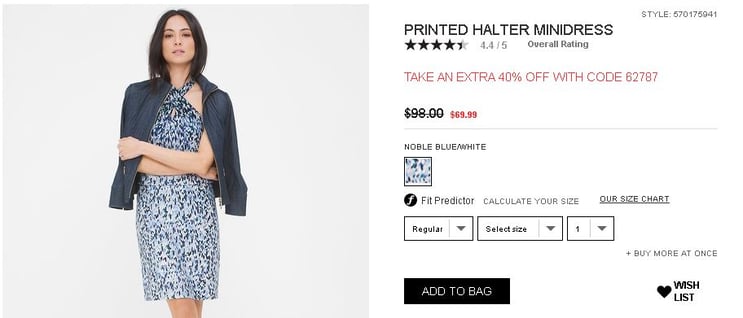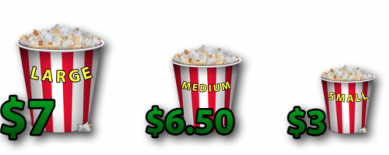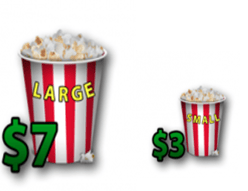How many times have you heard that every business needs to know their customers? Usually this means knowing their desires, wants, needs, problems, as well as location (where they are both online and physically - Location! Location! Location!).
One aspect that gets overlooked is knowing how the customers think: what truly drives people to buy any service or product. In this blog, we are looking at 5 basic elements of psychology (courtesy of HubSpot’s: An Introduction to Marketing Psychology) that will help you understand how people think, feel, and behave so you can better connect with your customers, which will lead to deeper connections, more loyal customers, and increased sales.
1. Anchoring
People love sales! JCPenney learned this the hard way when they announced “No More Sales.” They thought that a fair price would draw people and they decided to do away with overinflated prices. Unfortunately, they didn’t understand Anchoring. Anchoring is the concept that people base their decisions on the first piece of information they receive. That’s why sales are so appealing.

Image Source: White House Black Market
Compared to an initial price of $98, a sale price of $69.99 for a dress sounds great!
Key takeaway: Clearly state the initial price, and then display the sale price next to it. Some businesses even show how much of a discount in percentages the sale price is.
2. Decoy Effect
This is a pricing model that makes choosing the most expensive option the most logical option. Go to the movies and you can see this play out with popcorn.

In the example above, the medium sized popcorn is the decoy. Obviously getting a large popcorn for $7 is a much better deal than the medium popcorn. But if you removed the medium popcorn option, as seen below, people wouldn’t necessarily view the large sized popcorn as a bargain and choose to save $4 and buy the smaller one.

So, if you are looking to increase sales, or even conversions, on a landing page with two options, you might want to add a third. It could help drive sales to the more expensive option. To read more on the “decoy effect,” check out Jeremy Smith’s Blog.
3. Reciprocity
Have you ever been to a restaurant and they realize it’s your birthday so they bring out dessert free of charge? In order to show gratitude, you might feel an obligation (or even compulsion) to leave a little higher than normal tip. This is the principle of reciprocity. When given something for free, most people have a desire to give something back. An article by HubSpot gives great next steps for businesses. We’ve included that section of the article here:
“In your marketing, there are a lot of ways to take advantage of reciprocity. Before asking something of your audience, provide them with a “gift” first -- something for free. You don’t have to be rolling in dough to give something away; it can be anything from a branded sweatshirt, to an exclusive ebook, to a free desktop background, to your expertise on a difficult subject matter. Even something as simple as a handwritten note can go a long way in establishing reciprocity.”
Takeaway: Figure out what you can give away to your potential customers that would instill in them the desire to reciprocate your generosity.
4. Scarcity
No one wants to miss out on a good deal. Look no further than Black Friday sales. When the stores release their Black Friday sales, they will usually promote a few big-ticket items (e.g. TVs, computers, cars, etc.) and mention in the ad the number of items that will be available. When people see that only three 60” 4K 3D HDTVs will be available for some ridiculous price, people will literally camp out at the store. And the limited number of sale items incites a sense of urgency and is exactly what the Principle of Scarcity is all about. The scarcity principle goes back to the simple formula of supply and demand: The rarer the opportunity, content, or product, the more valuable it is to a consumer.
Initially we mentioned the failure of JCPenney’s “No More Sales” campaign. One of their failures was lacking a sense of urgency. If the prices are always the same, then the mindset is, “I’ll get there when I can.”
Takeaway: For any event that has limited availability, create this sense of urgency. It can be an event, a webinar, or anything that has a limit.
5. The Baader-Meinhof Phenomenon (Frequency Illusion)
I will admit that I hadn’t heard of the Pokemon Go phenomenon until just a couple of days ago. Now it seems I hear it everywhere (on the radio) and see it everywhere (TV news reports, people in town, and all the people talking about it on my Facebook feed). For some reason, it has gotten in my head and I find it everywhere. That is the Baader-Meinhof Phenomenon: once you hear about something, you see it and hear about it seemingly all the time. If you buy a Honda Accord, you’ll be amazed at how many Accords seemingly appeared out of nowhere.
It’s weird, right? Here’s why you’re suddenly seeing this new thing everywhere. This phenomenon (also called “the frequency illusion”) is caused by two processes. “The first, selective attention, kicks in when you’re struck by a new word, thing, or idea; after that, you unconsciously keep an eye out for it, and as a result find it surprisingly often. The second process, confirmation bias, reassures you that each sighting is further proof of your impression that the thing has gained overnight omnipresence.”
The theory behind this mere exposure effect is that you are more likely to have good feelings toward something that you’re exposed to often. In 2000, a study was conducted in which it showed participants a series of foreign words, which they were asked to rate based on each word’s connotation. The words that were shown repeatedly were rated, on average, one point higher in positivity than words that were only shown once.
For marketers, this phenomenon is precisely why nurturing is incredibly important. Once someone starts noticing your brand -- clicking around on your website, engaging with you on social platforms, reading your blog -- you’ll want to help them start seeing you “everywhere.” If you, for example, send them targeted, nurturing emails and retargeting ads based on their behavior, you could increase the possibility of them converting.
Bottom Line: The more exposure to your brand’s content, the more likely they will feel positively toward your brand.
In Conclusion
This is just a taste of behavioral principles that drive people to buy your services and products. Are you interested in learning beyond the basics of human behavior? Have you ever considered heat maps for your website? Do you know where your customers are hitting on your website?
Marketing is our expertise and we can help you reach your potential customers in a way they will receive what you have to offer. Contact us today to start reaching your audience in a meaningful way! Allow us to focus on our expertise so you can focus on yours.


Submit a Comment
Your email address will not be published. Required fields are marked *